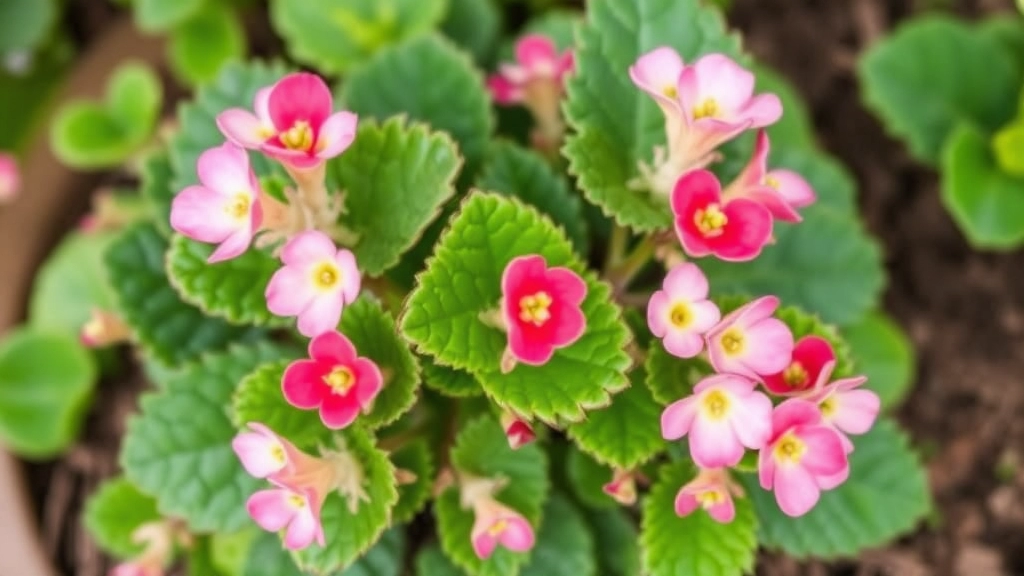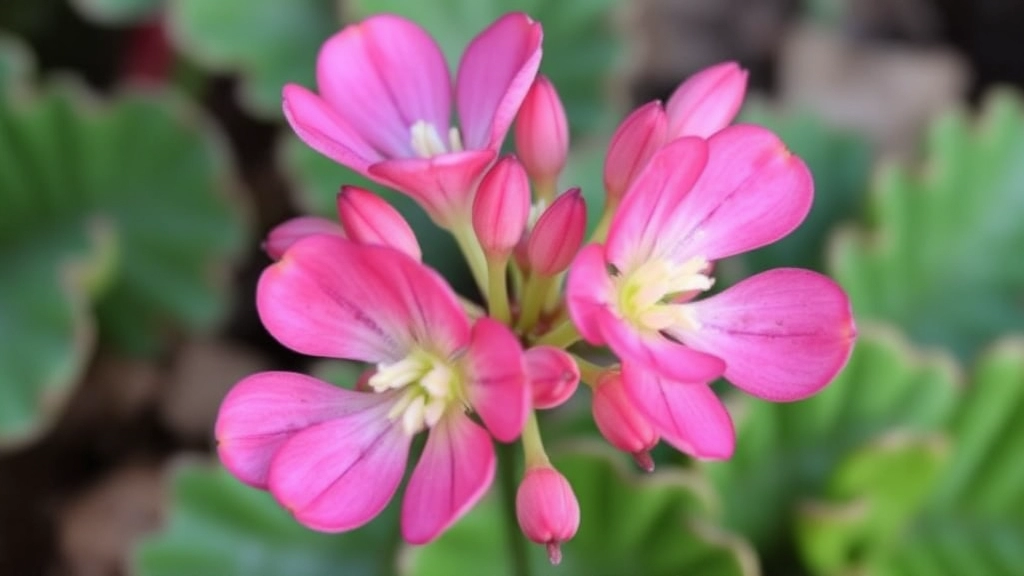Caring for Your Kalanchoe Delagoensis Tubiflora Mother Of Thousands
Ever wondered how to care for your Kalanchoe Delagoensis Tubiflora Mother Of Thousands? You’re in the right place. This unique succulent, also known as the Chandelier Plant, is both fascinating and easy to grow. In this guide, I’ll share simple tips to ensure your plant thrives, from light requirements to watering schedules.
Let’s dive into the essentials of nurturing your Kalanchoe Delagoensis Tubiflora Mother Of Thousands. Whether you’re a seasoned gardener or just starting, these practical steps will help you keep your plant healthy and vibrant. Say goodbye to guesswork and hello to a flourishing succulent!
Are you curious about what makes Kalanchoe Delagoensis Tubiflora a fascinating choice for your garden?
This succulent, often referred to as the “Mother of Thousands,” is known for its striking features and unique growth habits.
### Distinctive Features
– **Leaf Structure**: The leaves are thick, fleshy, and often have a wavy edge. They can grow up to 20 cm long and are usually a vibrant green, sometimes with a reddish tinge.
– **Propagation**: One of the most intriguing characteristics is its ability to produce small plantlets along the edges of its leaves. These plantlets can easily fall off and root in the soil, leading to a rapid increase in the plant population.
– **Flowers**: Kalanchoe Delagoensis Tubiflora produces tubular flowers that are typically orange or red. These bloom in clusters and add a splash of colour to any garden.
– **Growth Habit**: This plant can reach heights of up to 1 metre, making it a striking specimen in any setting. Its upright growth habit allows it to stand out among other succulents.
### Adaptability
Kalanchoe Delagoensis Tubiflora is also known for its resilience. It can thrive in various conditions, making it an excellent choice for both novice and experienced gardeners. If you’re interested in learning more about how to care for this unique plant, check out our [complete care guide for Kalanchoe Tubiflora](https://planthq.org/complete-care-guide-for-kalanchoe-tubiflora-mother-of-millions/).
Additionally, for those looking to expand their collection, you might want to consider exploring other [top Kalanchoe Mother of Thousands varieties and care tips](https://planthq.org/top-kalanchoe-mother-of-thousands-varieties-care-tips/).
Growing Conditions and Care Tips for Kalanchoe Delagoensis Tubiflora

So, you’re keen on nurturing your Kalanchoe Delagoensis Tubiflora, right?
Let’s dive into what makes this plant thrive.
Light Requirements
- Bright Indirect Light: This beauty loves light but not the harsh sun.
- Avoid Direct Sunlight: Too much sun can scorch those lovely leaves.
Temperature and Humidity
- Ideal Temperature: Keep it between 15°C and 25°C.
- Humidity Levels: It’s pretty adaptable, but a bit of humidity can help it flourish.
Soil Type
- Well-Draining Soil: A cactus mix or a potting mix with added perlite works wonders.
- pH Level: Aim for a slightly acidic to neutral pH (around 6.0 to 7.0).
Watering Tips
- Water Sparingly: Let the soil dry out completely between waterings.
- Signs of Overwatering: Yellowing leaves? Time to cut back on the H2O.
Fertilisation
- During Growing Season: A balanced, diluted fertiliser every month can boost growth.
- Avoid Winter Feeding: The plant goes dormant, so save the fertiliser for spring.
Pruning and Maintenance
- Regular Pruning: Trim any dead or damaged leaves to keep it healthy.
- Dusting Off: Wipe the leaves occasionally to let it breathe and shine.
Propagation Methods
As we explore the fascinating world of Kalanchoe Delagoensis Tubiflora, it’s essential to understand how to propagate this unique plant effectively. Propagation is not only a cost-effective way to expand your collection but also a rewarding experience for any gardener.
Common Issues and Solutions for Kalanchoe Delagoensis Tubiflora

As we delve deeper into caring for Kalanchoe Delagoensis Tubiflora, it’s essential to address common issues that may arise during its growth. Understanding these challenges will help you keep your plant thriving.
1. Overwatering
One of the most frequent problems with Kalanchoe Delagoensis Tubiflora is overwatering. This succulent prefers well-draining soil and can suffer from root rot if kept too moist.
- Signs to watch for:
- Yellowing leaves
- Wilting or mushy stems
Solution:
- Allow the soil to dry out completely between waterings.
- Use pots with drainage holes to prevent excess water accumulation.
2. Underwatering
Conversely, underwatering can also pose a threat to your plant’s health.
- Signs to watch for:
- Shrivelling leaves
- Dry, crispy edges
Solution:
- Water thoroughly when the top inch of soil feels dry.
- Ensure your plant receives consistent moisture, especially during the growing season.
3. Pests
Kalanchoe Delagoensis Tubiflora can attract pests like aphids and mealybugs.
- Signs to watch for:
- Sticky residue on leaves
- Visible insects or webbing
Solution:
- Treat infestations with insecticidal soap or neem oil.
- Regularly inspect your plant to catch issues early.
4. Temperature Fluctuations
This succulent prefers stable temperatures and can be sensitive to extreme cold or heat.
- Signs to watch for:
- Leaf drop
- Stunted growth
Solution:
- Keep your plant in a location with temperatures between 15°C to 25°C.
- Avoid placing it near drafts or heating vents.
5. Lack of Sunlight
Insufficient sunlight can lead to leggy growth and poor flowering.
- Signs to watch for:
- Stretching stems
- Fading leaf colour
Solution:
- Position your plant in bright, indirect sunlight.
- If indoors, consider using grow lights if natural light is limited.
Benefits and Uses of Kalanchoe Delagoensis Tubiflora in Gardening
As we explore the advantages of Kalanchoe Delagoensis Tubiflora, it’s essential to consider how this unique plant can enhance your gardening experience.
Aesthetic Appeal
Kalanchoe Delagoensis Tubiflora is not just a resilient plant; it also brings visual interest to any garden.
- Striking Foliage: The leaves have a distinctive shape and vibrant green colour, adding texture and contrast to your garden.
- Unique Flowers: When in bloom, the tubular flowers can attract pollinators, enriching the biodiversity of your garden.
Low Maintenance
One of the primary benefits of Kalanchoe Delagoensis Tubiflora is its low maintenance requirements.
- Drought Tolerance: This plant thrives in dry conditions, making it suitable for those who may not have time for frequent watering.
- Pest Resistance: Its natural resilience means fewer pests to worry about, reducing the need for chemical treatments.
Versatile Uses
Kalanchoe Delagoensis Tubiflora can serve various purposes in your garden.
- Ground Cover: Its spreading nature makes it an excellent choice for ground cover, helping to suppress weeds.
- Container Gardening: Perfect for pots and containers, it can be used to create stunning arrangements on patios or balconies.
Medicinal Properties
Interestingly, Kalanchoe Delagoensis Tubiflora has been noted for its medicinal uses.
- Traditional Remedies: Some cultures use its leaves for their purported healing properties, particularly in treating minor wounds.
Educational Opportunities
For those interested in teaching gardening skills, Kalanchoe Delagoensis Tubiflora can be an excellent subject.
- Propagation Lessons: Its ability to propagate easily makes it a great plant for educational demonstrations, helping beginners learn about plant care and growth.
Whether you’re a seasoned gardener or a beginner, Kalanchoe Delagoensis Tubiflora offers numerous benefits that can enhance your gardening experience. Learn more about its care and propagation in our comprehensive guide.
FAQs about Kalanchoe Delagoensis Tubiflora (Mother of Thousands)
What kind of light does Kalanchoe Delagoensis Tubiflora need?
Answer: Kalanchoe Delagoensis Tubiflora thrives in bright, indirect light. Direct sunlight should be avoided as it can scorch the leaves.
What is the ideal temperature range for this plant?
Answer: The ideal temperature range for Kalanchoe Delagoensis Tubiflora is between 15°C and 25°C. It prefers stable temperatures and can be sensitive to extreme cold or heat.
What type of soil is best for Kalanchoe Delagoensis Tubiflora?
Answer: This plant prefers well-draining soil, such as a cactus mix or a potting mix with added perlite. The pH level should be slightly acidic to neutral, around 6.0 to 7.0.
How often should I water Kalanchoe Delagoensis Tubiflora?
Answer: Water sparingly and allow the soil to dry out completely between waterings. Overwatering can lead to root rot, so it’s crucial to monitor the soil’s moisture level.
What are the signs of overwatering and how can I fix it?
Answer: Signs of overwatering include yellowing leaves and wilting or mushy stems. To fix this, let the soil dry out completely between waterings and use pots with drainage holes to prevent excess water accumulation.
What should I do if my plant is underwatered?
Answer: Signs of underwatering include shrivelling leaves and dry, crispy edges. Water thoroughly when the top inch of soil feels dry and ensure consistent moisture, especially during the growing season.
How can I deal with pests on Kalanchoe Delagoensis Tubiflora?
Answer: Common pests include aphids and mealybugs. Signs include sticky residue on leaves and visible insects or webbing. Treat infestations with insecticidal soap or neem oil and regularly inspect your plant to catch issues early.
What are the signs of temperature fluctuations affecting my plant?
Answer: Signs include leaf drop and stunted growth. Keep your plant in a location with stable temperatures between 15°C to 25°C and avoid placing it near drafts or heating vents.
What should I do if my plant is not getting enough sunlight?
Answer: Insufficient sunlight can lead to leggy growth and poor flowering. Position your plant in bright, indirect sunlight. If indoors, consider using grow lights if natural light is limited.
When and how should I fertilize Kalanchoe Delagoensis Tubiflora?
Answer: Fertilize during the growing season with a balanced, diluted fertilizer every month. Avoid feeding during winter as the plant goes dormant.
How do I maintain and prune Kalanchoe Delagoensis Tubiflora?
Answer: Regularly prune any dead or damaged leaves to keep the plant healthy. Additionally, wipe the leaves occasionally to remove dust and allow the plant to breathe and shine.
References
-
Houseplants Expert: Kalanchoe Delagoensis Tubiflora Care Guide
-
Gardening Know How: Growing Kalanchoe Delagoensis Tubiflora
-
The Spruce: How to Care for Kalanchoe Delagoensis Tubiflora
